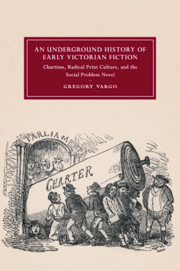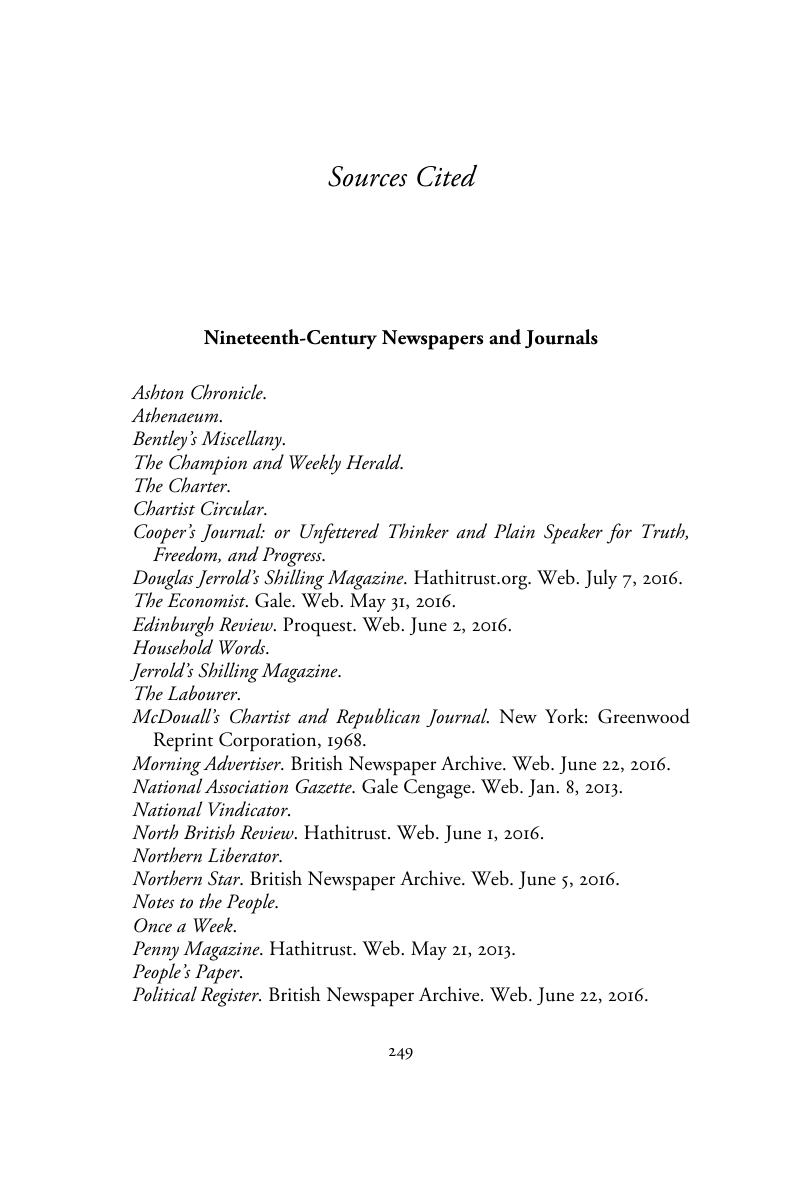 An Underground History of Early Victorian Fiction
An Underground History of Early Victorian Fiction Book contents
- An Underground History of Early Victorian Fiction
- Cambridge Studies in Nineteenth-century Literature and Culture
- An Underground History of Early Victorian Fiction
- Copyright page
- Dedication
- Contents
- Figures
- Acknowledgments
- Abbreviations
- Introduction: Can a Social Problem Speak?
- Part I Social Citizenship in the Poor Law Debates
- Part II Chartist Fiction and Culture
- Part III Radical Internationalism in the 1840s and 1850s
- Notes
- Sources Cited
- Index
- Cambridge Studies in Nineteenth-Century Literature and Culture
- References
Sources Cited
Published online by Cambridge University Press: 17 November 2017
- An Underground History of Early Victorian Fiction
- Cambridge Studies in Nineteenth-century Literature and Culture
- An Underground History of Early Victorian Fiction
- Copyright page
- Dedication
- Contents
- Figures
- Acknowledgments
- Abbreviations
- Introduction: Can a Social Problem Speak?
- Part I Social Citizenship in the Poor Law Debates
- Part II Chartist Fiction and Culture
- Part III Radical Internationalism in the 1840s and 1850s
- Notes
- Sources Cited
- Index
- Cambridge Studies in Nineteenth-Century Literature and Culture
- References
Summary

- Type
- Chapter
- Information
- An Underground History of Early Victorian FictionChartism, Radical Print Culture, and the Social Problem Novel, pp. 249 - 270Publisher: Cambridge University PressPrint publication year: 2017
